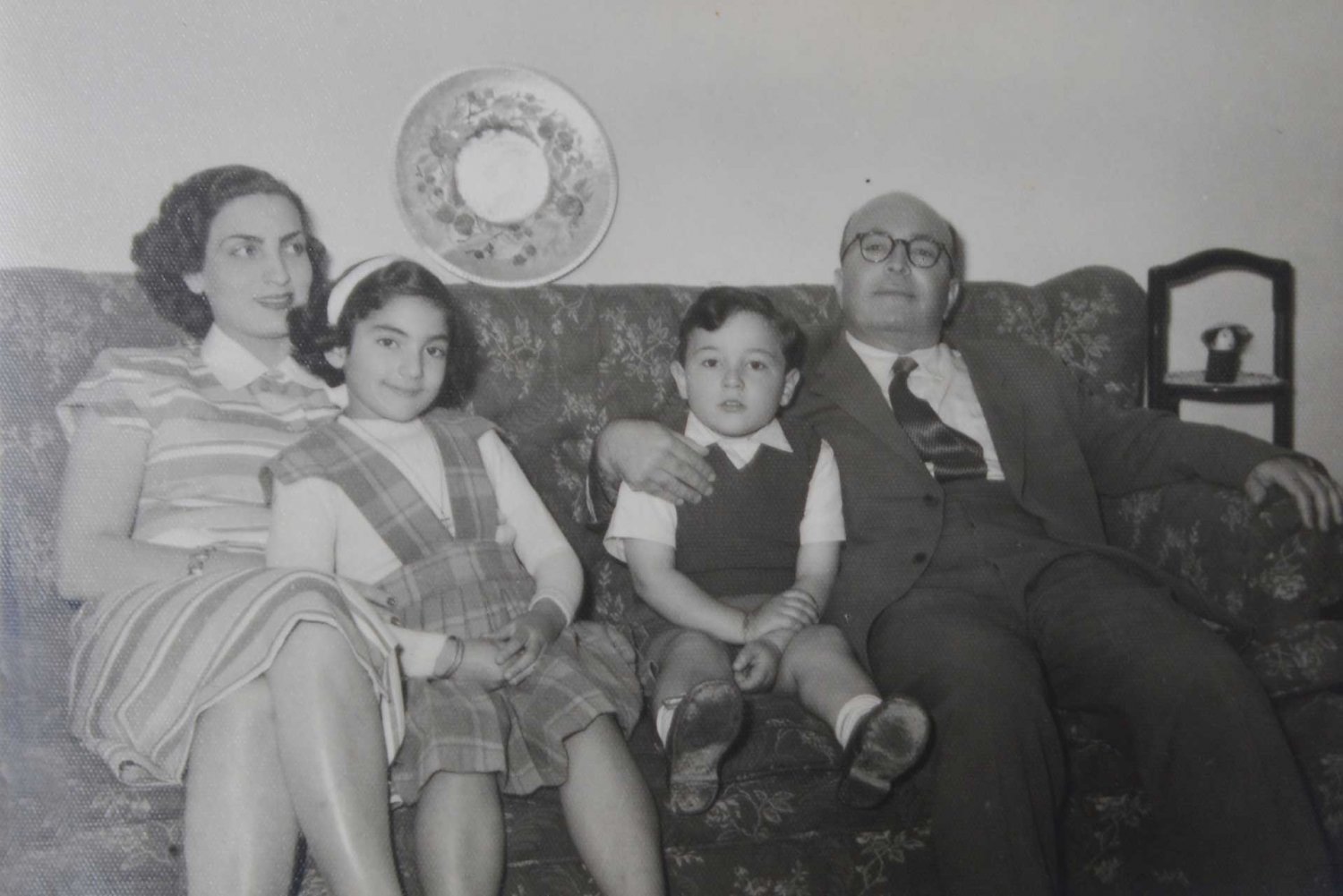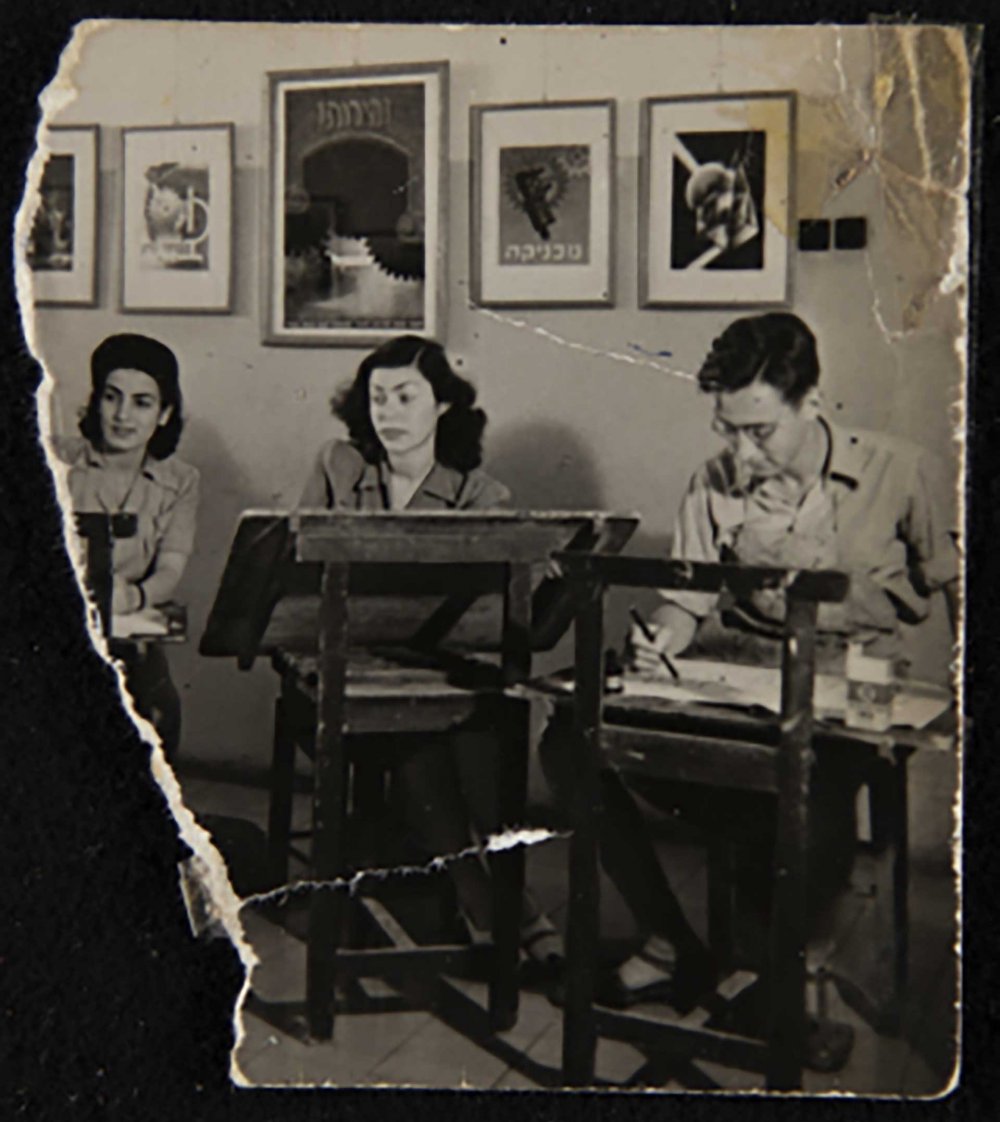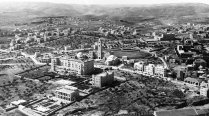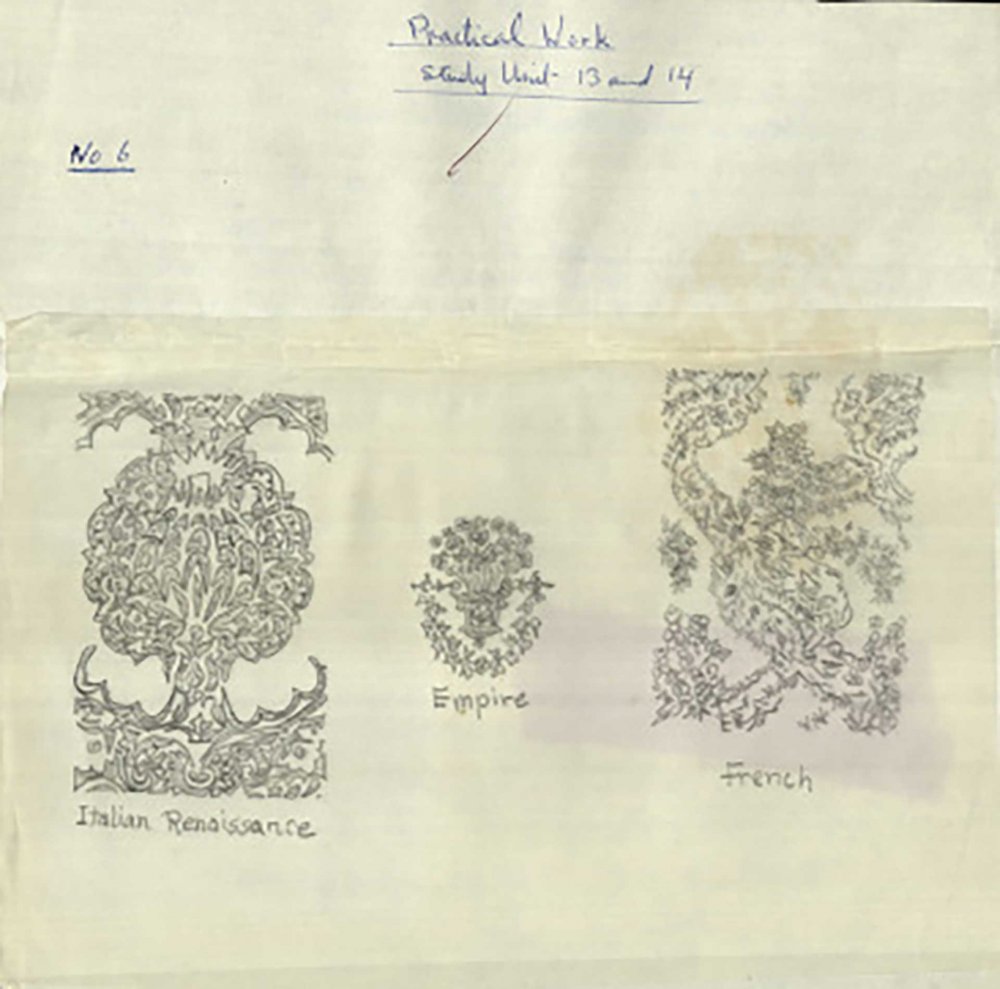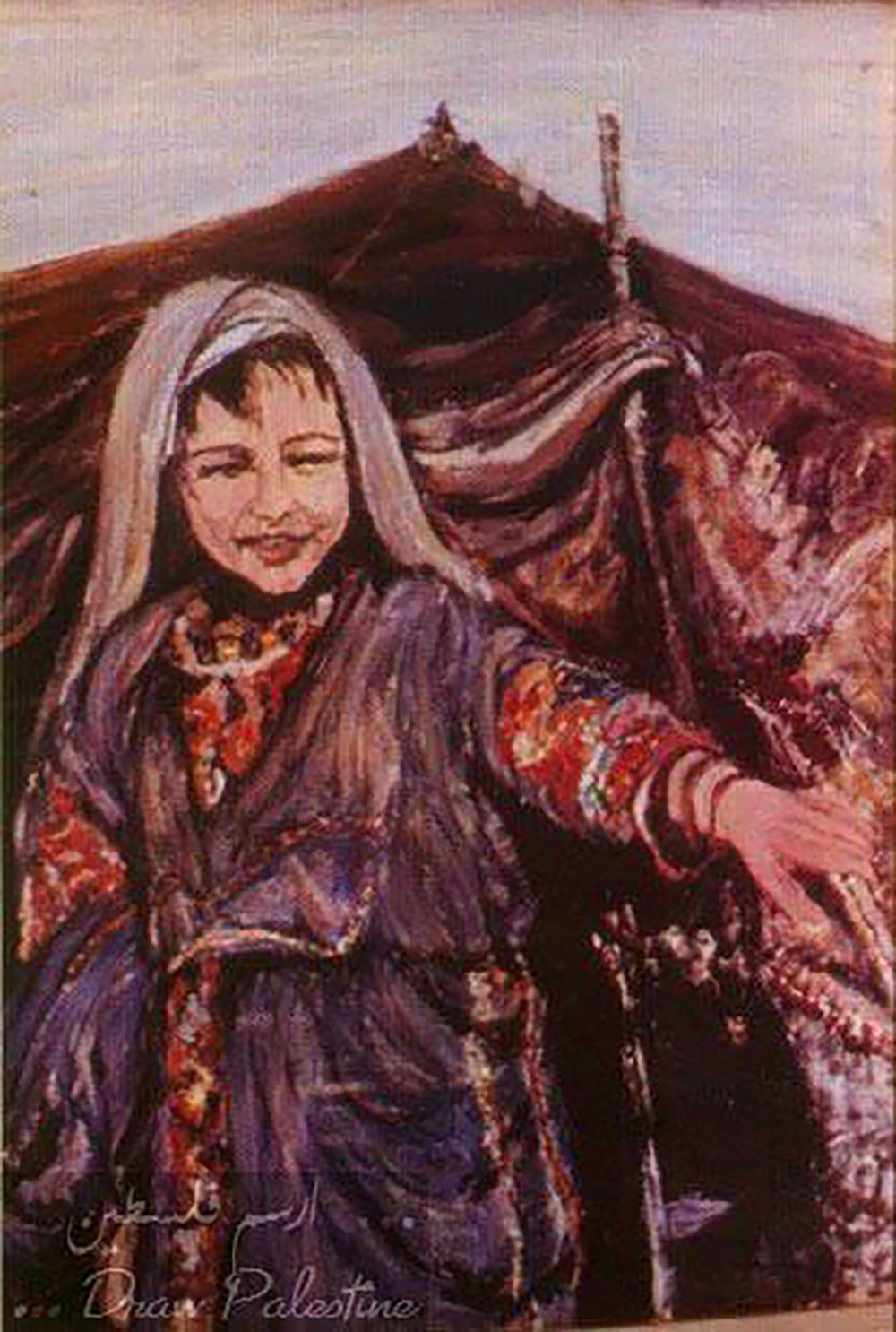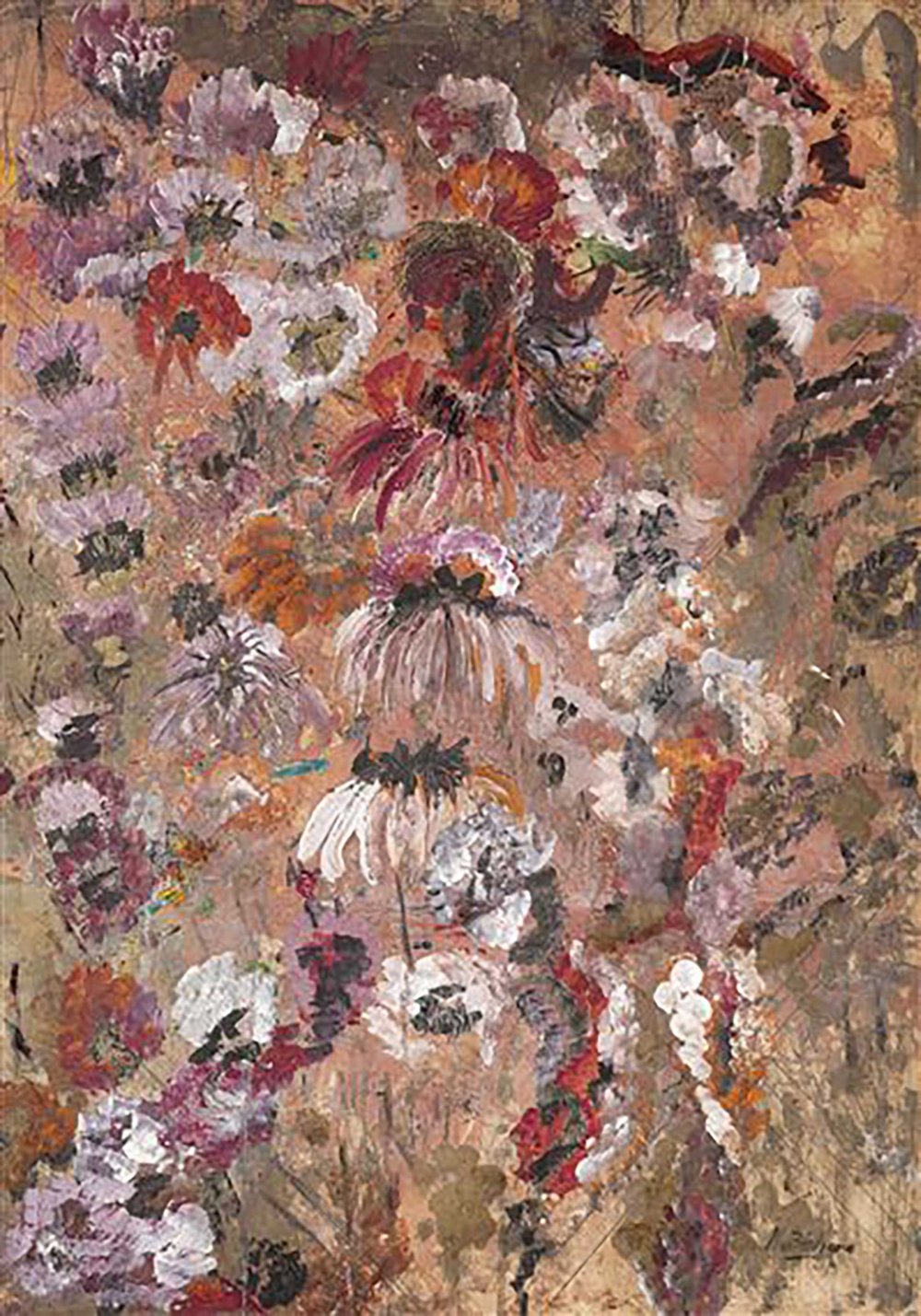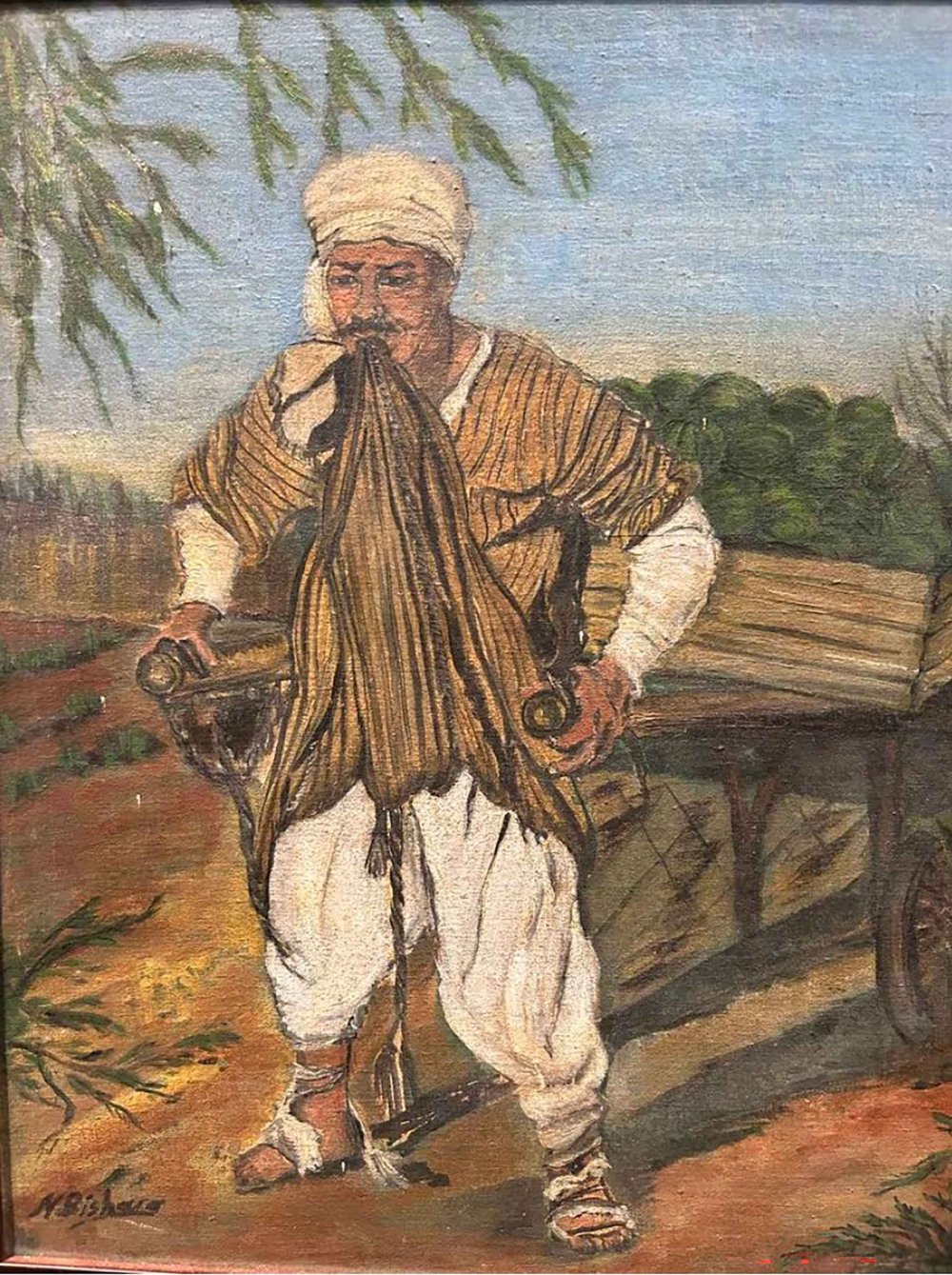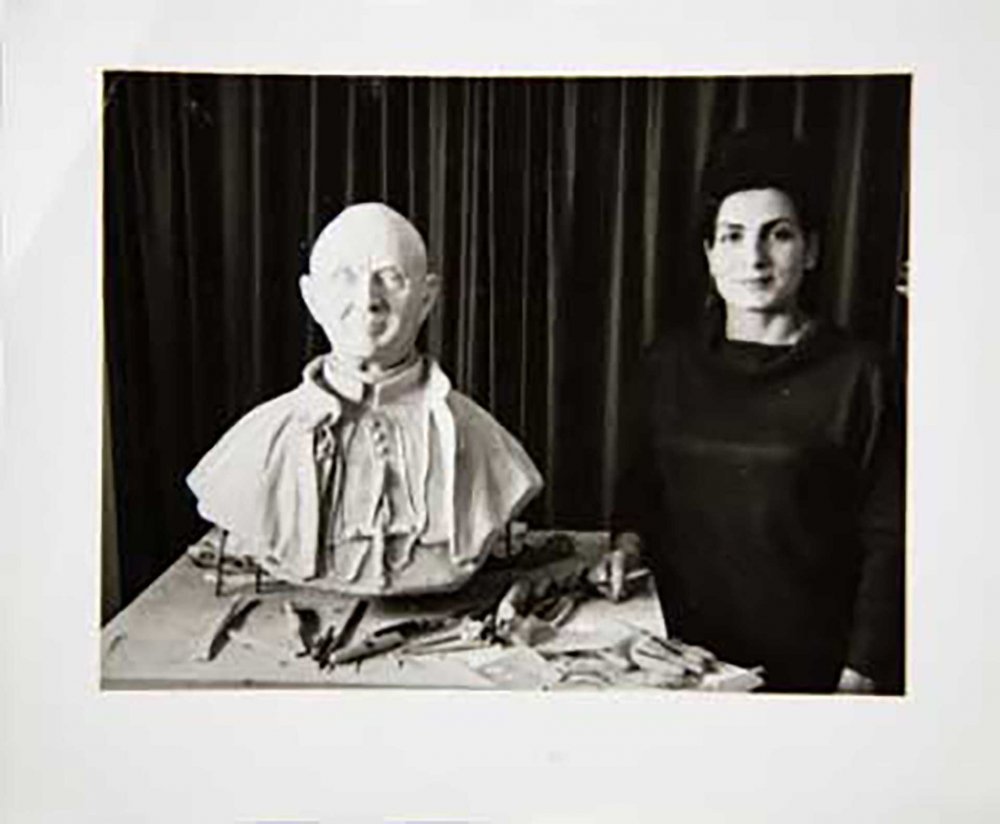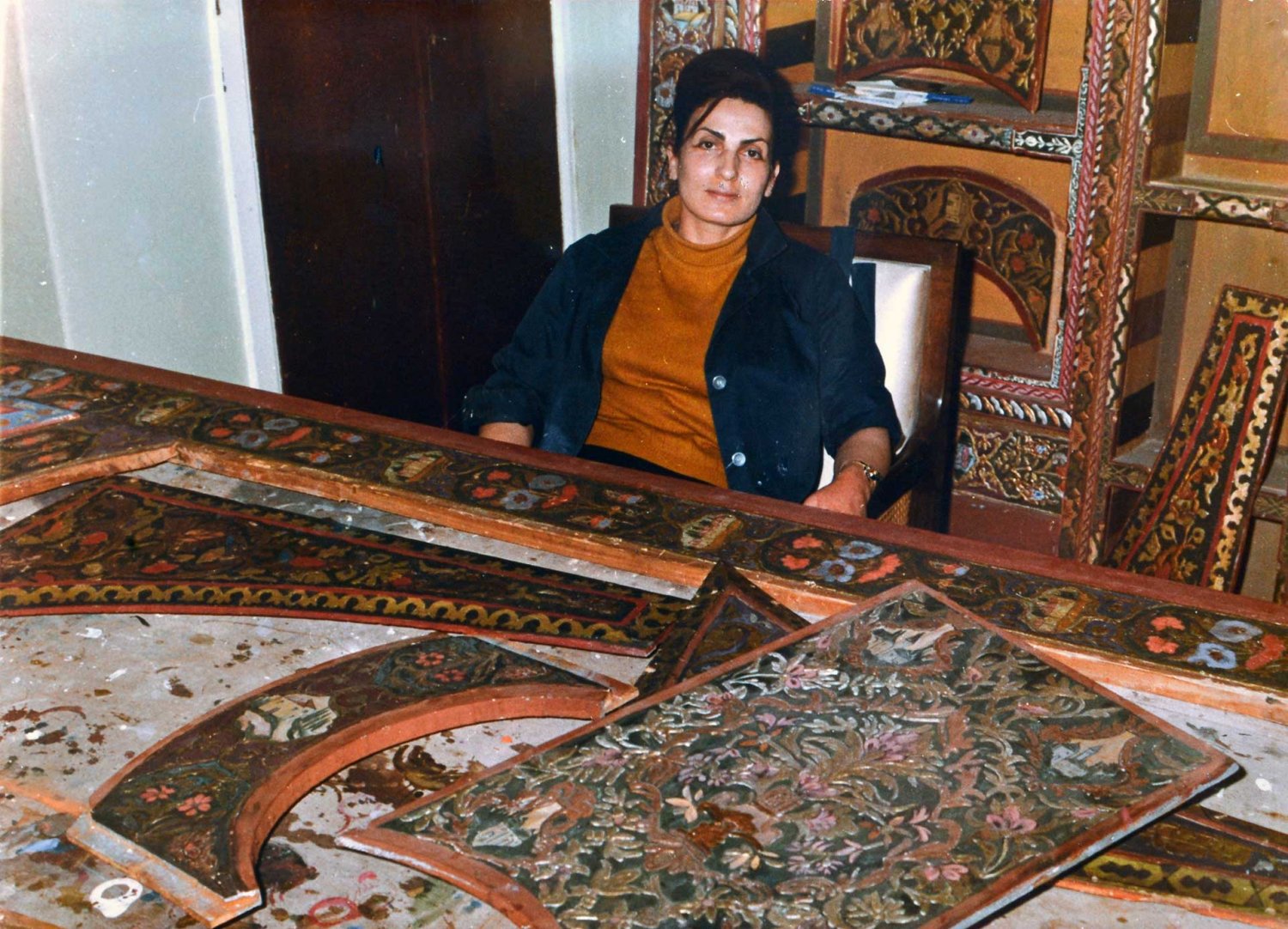Pioneering artist Nahil Bishara was one of the first Palestinian women to study art formally. Her artwork, inspired by impressionist techniques, told the story of Jerusalem’s history and traditions.
Early Life
Bishara was born in Jerusalem in 1919 to Nicola and Shafiqa Aqel. She had four siblings: Ellen, Badiaa, Sylvie, and Ibrahim. Her father passed away while she was young, and her sister Ellen became primarily responsible for raising her.1 From a very early age, Bishara exhibited exceptional artistic talent.
Bishara was raised in Ramallah, but she commuted to Jerusalem daily to attend Schmidt College School for Girls, a German school founded in 1886. History, domestic science, and handwork were among her favorite subjects in school. She graduated from Schmidt College in 1942.
At some point the family moved back to Jerusalem to the German Colony in the New City. But when war broke out in 1948, they had to move to the eastern side.2
Nahil Bishara's School Certificate
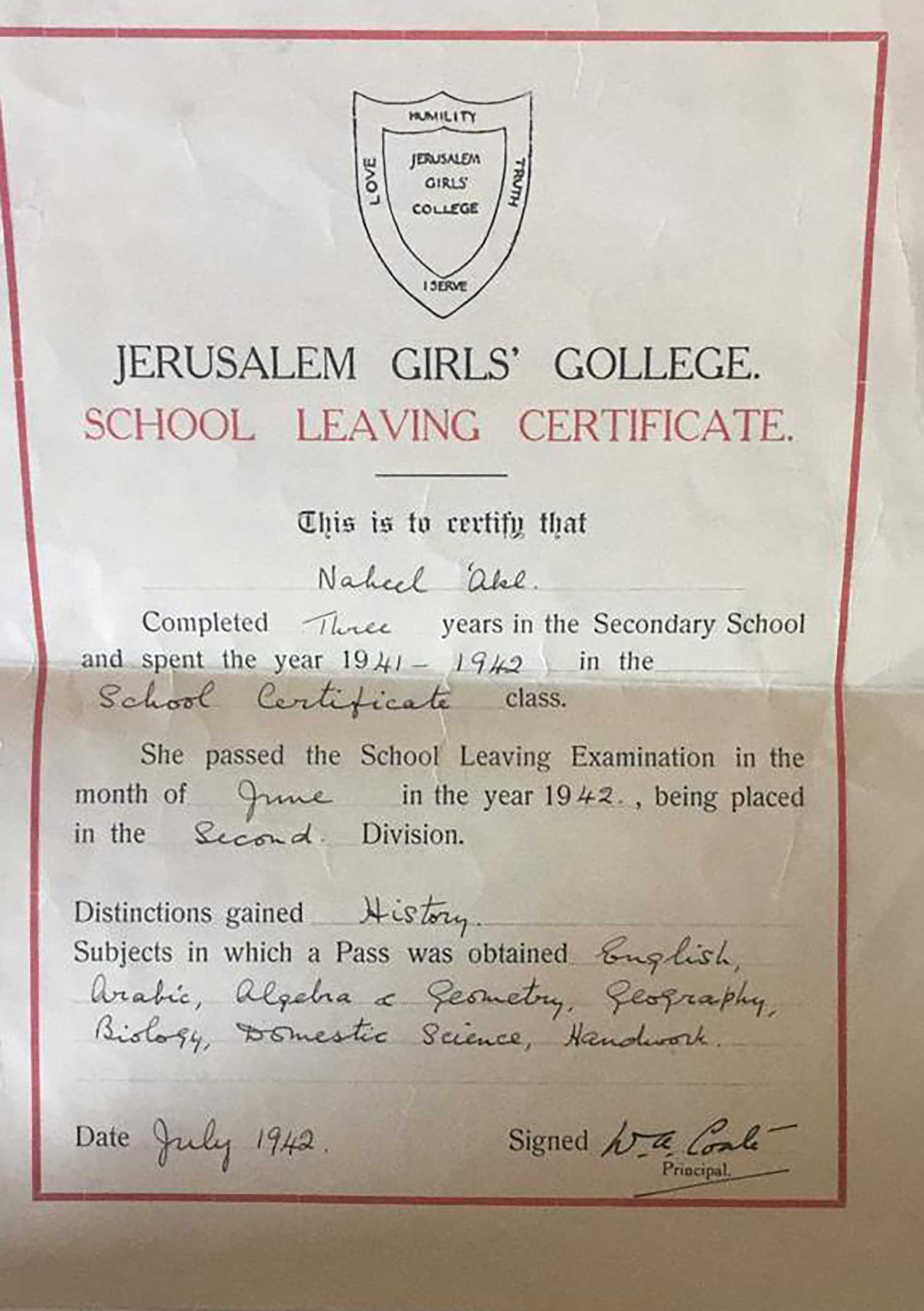
Notes
Courtesy of Talia Bishara
A school certificate certifying that Bishara completed her secondary schooling at Schmidt School in 1942. She excelled in history.
Family Life
Bishara settled in Jerusalem when she married Dr. Assad Bishara, a gynecologist and obstetrician based in Jerusalem, who was also known for his extensive volunteer work.3
The couple had two children: Shukri, who became a banker, and Laila, a journalist and writer.
Art Training
After she graduated from high school, Bishara’s aptitude for and interest in painting caught the attention of one William A. Stewart, an Englishman who lived in Jerusalem at the time and was the Supervisor of Technical Education under the British High Commissioner of Palestine. He was involved with the arts, including with the founding of Bezalel School of Art in Jerusalem. Stewart initially offered to send Bishara to England to study art, but her parents would not allow it at that time of global instability during a world war. Instead, Stewart arranged for her to study locally at Bezalel, the only art school in Jerusalem at the time—but only for Jews. Thus, Bishara was the first Palestinian ever to enroll at Bezalel.4
She studied there under the mentorship of painter Mordecai Ardon and took a limited number of classes from 1942 until 1944.5
In 1956, she pursued further art studies at the Accademia di Belle Arti in Perugia, Italy, where she obtained her first diploma in art.6 Her training there was diverse; she was introduced to different art forms and techniques and studied art history. Some of her mentors at the academy included Dante Falipucci, Fulgido Amori, and Ricardo Leverini Mirabell. Then she returned to Jerusalem, where she received local art commissions, including developing the interior design for the East Jerusalem YMCA.7
She earned a second diploma in 1962 from the Chicago School of Interior Design and Decoration, where she specialized in architecture and ceramics.
Art Work
The following painting is typical of the spirit of Bishara’s art.
The little girl, who looks to be about seven or eight, stands in front of a tent and extends her left hand toward an unseen object, as though motioning to a friend or animal. Her face is turned away from the viewer and looking toward the object she tries to draw close. While the painting looks hazy and unrefined, typical of the impressionist style, the girl’s outfit is detailed enough for the viewer to note colorful embroidery, a bracelet, a necklace, and a belt. She also wears a headscarf, which rests slightly unevenly on her head, perhaps in the casual manner of a carefree child. The girl is smiling.
Bishara’s artistic expression was varied, but the style and spirit are similar across different mediums. Although the scene is blurry, it is clear enough for the viewer to see what mattered to Bishara: the details of Palestinian tradition preserved in the clothes and the scene; the human emotion; the fleeting moment of a mundane day. Together, these elements weaved regional flavors of Palestine that represented its broader, encompassing identity.
Bishara worked with paintings, sculpture, fabrics, ceramics, and etchings. In fact, what set her apart from contemporaries was her diverse skill set and interdisciplinary approach to art. She was as comfortable with acrylic painting as she was with glassblowing; as familiar with oriental designs as she was with European artistic motifs. In essence, she was more of a craftswoman than simply an artist. Bishara was also unique in her impressionist style, since most artists of her generation leaned more toward realism. Using the wild and vibrant strokes that characterized her paintings, she depicted Jerusalem’s streets, people, and busy urban landscapes. She tried to capture the traditions of the city in her depictions of clothes and figures. In her own way, Bishara used her aesthetic sensibilities to preserve a Jerusalem and a Palestinian way of life threatened by Zionist encroachment.
In addition to urban scenery, Bishara painted Palestinian flora—representations which were heavily influenced by impressionist techniques.8
Another key work is her portrait of a Palestinian watermelon farmer, which the artist completed in 1956, eight years after the 1948 War. Of this work, which was recently included in On This Land, a major exhibit of Palestinian art in Dubai at Alserkal Avenue, her granddaughter Talia said, “The Watermelon Farmer captures the hardships of Palestinian farmers at the time. You can also notice their traditional attire of the time. But more importantly, it captures the resilience, tenacity and the endurance of the Palestinian society, but also shows how fertile the Palestinian soil is."9
Perhaps her most acclaimed work was her depiction of scenes from the life of Saint Bernadette and her sculpture of Pope Paul VI. The latter was commissioned by the Hashemite Kingdom of Jordan in 1964.
Today, Bishara’s works appear in various places: the Vatican Museum, the National Museum in Jordan, Dar El-Nimer for Arts and Culture in Lebanon, and Palestine’s Birzeit University Museum. Some pieces have been sold in private auctions. Sadly, not everything survives.
Art Advocacy
In addition to her art, Bishara’s lasting achievement and contribution was her promotion of artistic expression in Jerusalem. She served on the board of trustees of the Palestinian Folklore Museum at the Rockefeller Museum and on the advisory committee of Jordan Broadcasting Jerusalem’s arts department. She founded an art center that offered training to refugees in art conservation.
Trained in conservation herself, she also played an important role in reviving the art of glassblowing in Hebron.
Bishara focused on the themes of culture, tradition, urban life, and both natural and man-made landscapes. Her insights as a pioneering female artist allowed her to create a unique repository of Jerusalem’s social history and Palestinian identity. Through her work with oil paint, ceramics, glass, fabric, and clay, she captured her memories of Jerusalem and, more broadly, Palestine. She died in Jerusalem in 1997.
Sources
Bedirian, Razmig. “On This Land, an Exhibition in Alserkal Avenue, Is a “‘Triumph of Palestinian Culture.’” The Frontier Post. Accessed December 6, 2023.
Emanuela Trevisan Semi, Dario Miccoli, and Tudor Parfitt, Memory and Ethnicity: Ethnic Museums in Israel and the Diaspora (Newcastle Upon Tyne: Cambridge Scholars Publishing, 2013).
“Nahil Bishara.” Mutual Art. Accessed November 15, 2023.
“Nahil Bishara (Palestinian, 1919–1997).” Christie’s. Accessed November 15, 2023.
Zoughbi, Saleem. “Nahil Bishara (1919–1997)–A Pioneering Palestinian Impressionist Artist.” This Week in Palestine. Accessed November 15, 2023.
Notes
Talia Bishara, interview with the author, October 19, 2023.
Alison Buckholz, “A Palestinian ‘Gift to Ourselves,’” The Jerusalem Post, July 7, 1988.
Bishara, interview.
Emanuela Trevisan Semi, Dario Miccoli, and Tudor Parfitt, Memory and Ethnicity: Ethnic Museums in Israel and the Diaspora (Newcastle Upon Tyne: Cambridge Scholars Publishing, 2013), 125.
“Nahil Bishara (Palestinian, 1919–1997),” Christie’s, accessed November 15, 2023.
Saleem Zoughbi, “Nahil Bishara (1919–1997)–A Pioneering Palestinian Impressionist Artist,” This Week in Palestine, accessed November 15, 2023.
Bishara, interview.
“Nahil Bishara,” Mutual Art, accessed November 15, 2023.
Razmig Bedirian, “On This Land, an Exhibition in Alserkal Avenue, Is a “‘Triumph of Palestinian Culture,’” The Frontier Post, accessed December 6, 2023.

